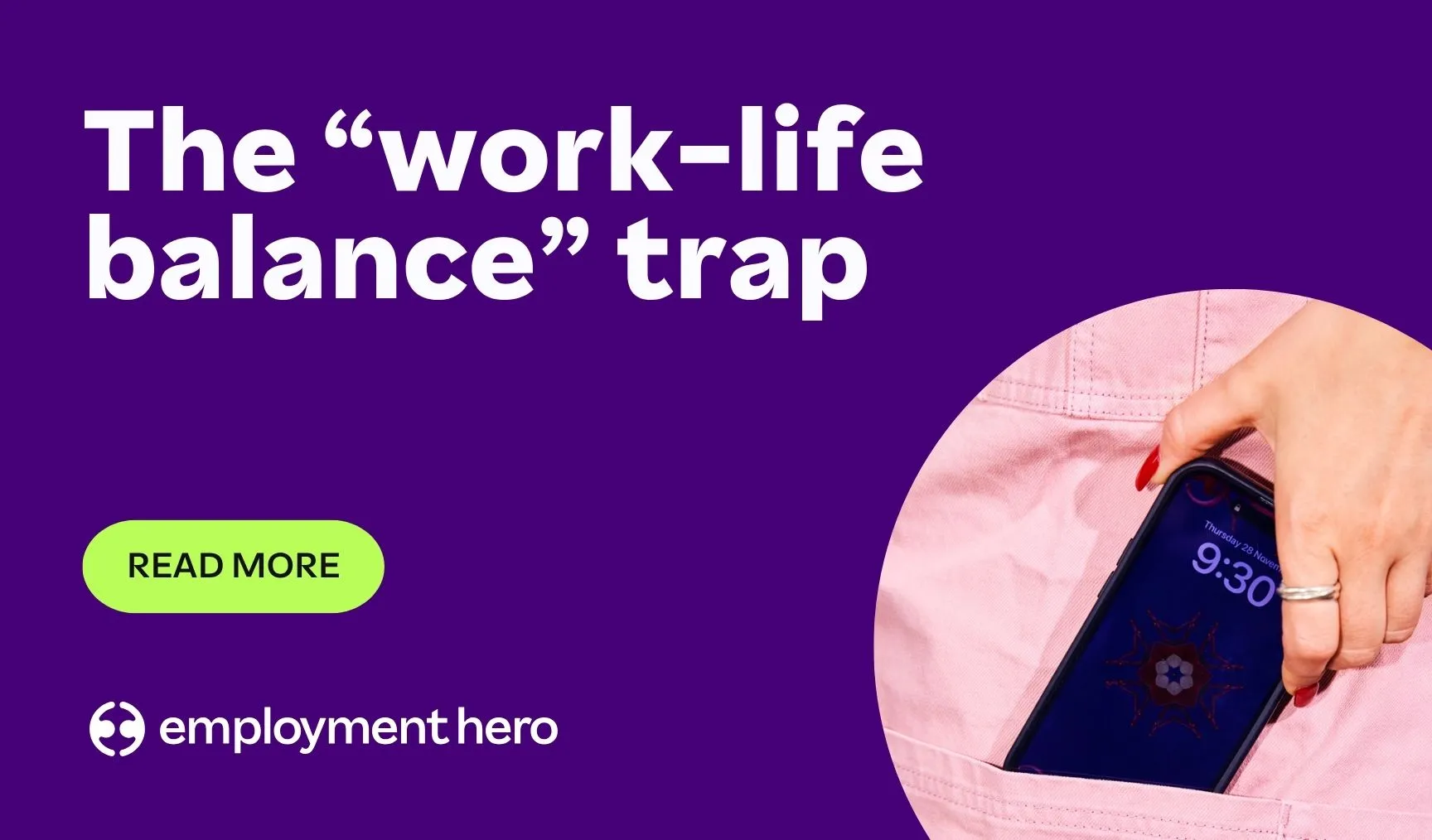How Anonymous Employee Feedback Can Help Your Business Grow
Are you tired of hearing only positive feedback at work? Anonymous feedback could be the tool for you.

Are you longing for honest insights from your employees or coworkers? Anonymous feedback could be the solution you’re looking for. In today’s business world, it’s important to encourage a culture of feedback and continuous improvement. However, employees may be hesitant to share their true thoughts and opinions for fear of retaliation or judgement. And that’s exactly where anonymous feedback comes in. Ready to explore the benefits of anonymous feedback in the workplace and how it can help your business grow and succeed? If so, let’s dive in to find out how anonymous feedback can be a game-changer for your business.
What is anonymous employee feedback?
Anonymous employee feedback is a process in which employees are given the opportunity to share their thoughts, opinions, and feedback on their workplace and work environment, without revealing their identity. This type of feedback is usually collected through surveys, questionnaires, or other channels that allow employees to provide feedback anonymously. The purpose of anonymous employee feedback is to create a safe and non-threatening environment for employees to express their honest opinions and concerns, without fear of retaliation or negative consequences. Feedback given like this can provide valuable insights for employers and managers to improve the workplace and address any issues or concerns that may exist among their employees. Wondering how to get honest employee feedback about your company? We have the answers with 12 best practice examples .

What is the role of anonymity at work?
Anonymity can play an important role in creating a safe and open work environment. It can encourage employees to speak up and share their opinions and concerns without fear of being punished in some way. This makes it an effective tool for promoting open communication, constructive feedback, and a positive work environment. By creating an environment in which employees feel comfortable expressing their opinions and concerns anonymously, employers can foster a culture of transparency, accountability, and continuous improvement. It can also help to reduce workplace bias by allowing employees to provide feedback without fear of bias or discrimination. Employee feedback is essential for taking teams to the next level. Here are tips on how to give and receive feedback effectively.
Is anonymous feedback more honest?
Unsurprisingly, anonymous feedback is often more honest than feedback that requires employees to identify themselves. When employees can provide feedback anonymously, they are more likely to be candid and open about their thoughts and feelings, without having to worry about offending their managers or colleagues.

On the other hand, when feedback is identifiable, employees may feel pressure to hold back or sugarcoat their feedback, especially if they’re concerned about how their comments will be received. They may be afraid of being viewed negatively by their colleagues or managers or worried about potential negative consequences for their job. The upside of this is that employees might give extra thought to how they are communicating. Learn more about what 360-degree feedback is, and how it can be used to develop employees further by facilitating constructive feedback.
What are the benefits of anonymous feedback in the workplace?
Encourages honesty and transparency
When employees can provide feedback anonymously, they are more likely to be honest and transparent about their thoughts, feelings, and experiences. This can lead to more accurate and useful feedback for employers.
Reduces fear of retaliation
Employees may be hesitant to provide feedback if they fear retaliation or negative consequences. Anonymous feedback eliminates this fear and encourages employees to share their honest opinions.
Identifies issues early
Anonymous feedback can help identify issues or problems that may be going unnoticed or unaddressed. This can help employers to make improvements and create a better work environment.
Promotes fairness and equality
Anonymous feedback can also help promote fairness and equality in the workplace by ensuring that everyone’s opinions and feedback are considered, regardless of their position or seniority.
Increases employee engagement
When employees feel heard and valued, they are more likely to be engaged and invested in their work. Anonymous feedback can help increase employee engagement by giving employees a voice in the company.

What are some areas of work in which anonymity should not be used?
While anonymous feedback can be a useful tool for gathering feedback in many areas of work, there are some areas in which anonymity should not be used, such as:
- Personal performance feedback – when providing feedback on an individual’s performance, it is important to be transparent and specific. Anonymous feedback can be vague or general, making it difficult for employees to understand what they need to do to improve.
- Employee discipline – when an employee is being disciplined for misconduct, it’s important for them to know who is holding them accountable. Anonymous feedback in such cases can be seen as unfair and potentially lead to legal issues.
- Team-building – anonymous feedback should not be used in team-building activities as it can hinder trust and transparency between team members.
- Conflict resolution – when resolving conflicts between employees, all parties involved need to be transparent about their concerns and opinions.
What is the best way to collect anonymous feedback at work?
The best way to collect anonymous feedback at work depends on the specific circumstances and the type of feedback you’re looking for. That being said, we’ve got some general tips for collecting anonymous feedback.
1. Use a third-party tool
Using a third-party tool, such as a survey software or an anonymous feedback platform, can help ensure that employee feedback remains confidential and anonymous.
2. Communicate clearly
When collecting anonymous feedback, it is important to communicate clearly with employees about the purpose of the feedback, how it will be collected, and how it will be used. This can help increase employee trust and participation.
3. Keep it simple
Keep the feedback questions clear, concise, and relevant. Avoid using leading questions or making assumptions about what employees are thinking.
4. Allow for open-ended responses
In addition to multiple-choice questions, allow for open-ended responses so employees can provide more detailed feedback and suggestions.
5. Be consistent
To ensure fairness, it is important to collect feedback consistently and regularly, rather than only when there is a problem or issue. What are employee surveys, and should you be using them? The simple answer is yes, yes and yes. Let’s look at why.

Best anonymous feedback tools to improve your feedback process
Employee happiness and engagement surveys
Happy employees are engaged employees, and for most organisations, a happiness survey is the first step in engaging with their employees. Measuring, actioning and closing the loop on the survey feedback will show your employees that management listens to and values their input. The Employment Hero Employee Happiness feature allows you to rate your happiness out of 10 and provide a comment on why you gave this rating. This data is anonymous, and there is no way for managers to identify respondents, ensuring you’ll get the most honesty from your team and helping you optimise performance management. A 360-degree review is a great way to get feedback from all angles on an employee’s performance. Download and use our free template today.

Online suggestion box
An online suggestion box is a digital platform that allows individuals to submit feedback, ideas, or suggestions to an organisation or group. The platform can be a web application, a mobile app, or a simple web form. It’s an easy and convenient way for individuals to share their feedback and ideas, helping to foster communication and engagement between employees and leaders. Connecteam is one example of an award-winning suggestion box software solution with lots of handy features which bring employees into the decision-making process.
AI chatbots
AI chatbots can also be used for gathering feedback – anonymously or not. Chatbots can be designed to ask specific questions and collect feedback from users in a conversational way. This type of feedback collection can be automated, which can save businesses heaps of time and resources. AI chatbots can be programmed to ask follow-up questions based on the user’s responses, allowing for more detailed feedback to be collected. They can also be trained to recognise certain keywords or phrases that may indicate a user’s sentiment, such as positive or negative feedback. And there’s more – AI chatbots can be designed to provide personalised responses to users, based on the feedback they provide. For example, if a user provides negative feedback about a product, the chatbot can provide a tailored response to address their concerns and offer solutions or next steps.
Employee feedback platforms
Employee feedback platforms are digital tools or software that enable businesses to collect, analyse, and act on feedback from their employees. These platforms may include features such as surveys, pulse polls, suggestion boxes, and even performance reviews. Typically these platforms also include tools for analysing and reporting on the feedback collected, enabling businesses to identify trends, track progress over time, and make data-driven decisions. Leapsome is a leading employee feedback platform. It’s designed to facilitate a culture of rapid development and learning by giving continuous anonymous feedback and sharing praise with anyone in the organisation. It also includes a library of best practices and resources, so that employees can continue to develop their skills and knowledge.
Anonymous eNPS (Employee Net Promoter Score)
Anonymous eNPS (Employee Net Promoter Score) is a way of measuring employee satisfaction and loyalty towards a business or organisation. It is a variation of the Net Promoter Score (NPS) which is a widely-used metric for measuring customer satisfaction and loyalty. The eNPS survey is like an ‘internal Glassdoor’ and measures the likelihood of employees recommending their company as a place to work, using a scale of 0 to 10. Employees are then grouped into three categories:
- Promoters (score of 9-10) who are highly satisfied and likely to recommend the company to others.
- Passives (score of 7-8) who are satisfied but not as likely to recommend the company.
- Detractors (score of 0-6) who are not satisfied and unlikely to recommend the company.
An advantage of using the Anonymous eNPS survey is that it allows employees to provide feedback anonymously, which may encourage more honest and open responses. It also provides a simple and easy-to-understand metric for measuring employee satisfaction and loyalty, which can help businesses identify areas for improvement and track progress over time.
Getting more insights through 360-degree feedback
360-degree feedback is a performance evaluation method that involves feedback from multiple sources, including the employee being evaluated, their manager, peers, direct reports, and sometimes external stakeholders such as customers or vendors. This kind of feedback can be a valuable tool for providing a comprehensive view of an employee’s performance and identifying areas for improvement. By involving multiple sources of feedback, the process can provide a more holistic and accurate view of an employee’s strengths and weaknesses. Feedback is typically collected through a combination of surveys, interviews, and other feedback mechanisms. Participants are asked to provide feedback on the employee’s strengths, weaknesses, and areas for improvement. Once feedback is collected, it is analysed and compiled into a report that summarises the key themes and trends. This report is typically shared with the employee being evaluated and their manager. The employee being evaluated and their manager can review the feedback together and discuss the key themes and areas for improvement, identifying specific actions to be taken to improve performance. Get your free 360-degree feedback template here.
What should managers do if they receive bad feedback from employees?
Receiving negative feedback can be an opportunity for managers to improve their leadership skills and build stronger relationships with their team. By taking responsibility, developing an action plan, and following up with employees, managers can demonstrate their commitment to creating a positive work environment and fostering employee engagement.

If managers receive negative feedback from employees, there are several steps they can take to address the issues and improve the situation. 1. Active listening When receiving feedback from employees, it’s important to listen actively and avoid getting defensive. Acknowledge the feedback and take time to reflect on it before responding. 2. Clarify and ask for specifics To better understand the feedback and identify specific areas for improvement, managers should ask for specific examples and clarification of the issues raised. 3. Take responsibility If the feedback is related to the manager’s behaviour or actions, it’s important to take responsibility and acknowledge the impact it has had on employees. 4. Develop an action plan Based on the feedback received, managers should develop an action plan that outlines specific steps they will take to address the issues raised. This plan should be shared with employees and progress should be regularly communicated. If the feedback highlights broader systemic issues within the company, managers should also work with their peers and leadership to address these issues and create a plan for improvement.
Try Employment Hero’s custom survey feedback tool
We understand that feedback can sometimes be a hard thing to hear, but it can also be a hard thing for employees to give honestly. That’s why anonymous feedback can be a powerful tool for providing honest, constructive feedback that can help employers improve their workplace culture and address issues that may otherwise go unsaid. By promoting honesty, transparency, and fairness, anonymous feedback can help create a positive and productive work environment that benefits both employers and employees. However, employers shouldn’t rely on anonymous feedback alone. Leaders should also provide opportunities for employees to provide feedback in person or through other channels that allow for open communication and dialogue, contributing to the overall business growth and success. And that’s what we’re here for at Employment Hero – your success! We can help you achieve your goals with software solutions that make people management easy. To talk about tools to grow your business, book a demo with one of our business specialists today!
Related Resources
-
 Read more: Product Update: June 2025
Read more: Product Update: June 2025Product Update: June 2025
Follow our June 2025 product update as we share all of the latest and greatest features we’ve released over the…
-
 Read more: The ‘work-life balance’ trap: Why promising it is hurting your SME recruitment (and what to promise instead)
Read more: The ‘work-life balance’ trap: Why promising it is hurting your SME recruitment (and what to promise instead)The ‘work-life balance’ trap: Why promising it is hurting your SME recruitment (and what to promise instead)
For growing SMEs, work-life integration is a sustainable way to support your team and attract top talent. Explore how your…
-
 Read more: Job ad guide: How to attract top candidates
Read more: Job ad guide: How to attract top candidatesJob ad guide: How to attract top candidates
Looking to hire your perfect match? The way you pitch your open role can be the difference between landing or…





















